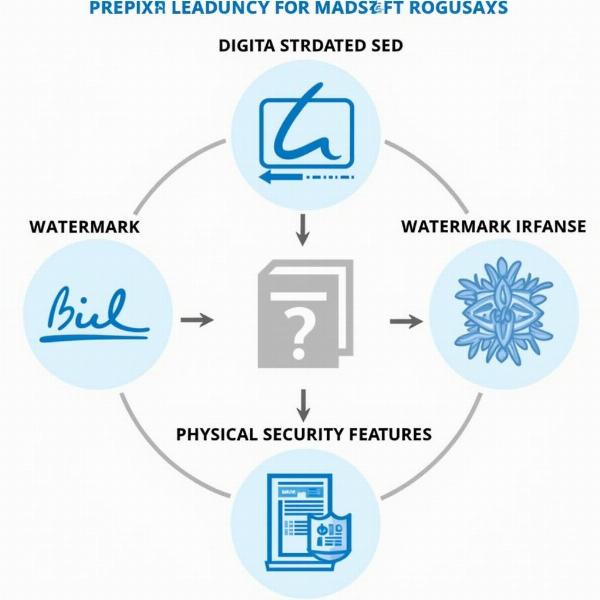Understanding the phrase “alteration require drawers authentication” is crucial, especially in financial and legal contexts. This phrase, often found in banking and document verification processes, essentially means that any changes made to a document, particularly a financial instrument like a check or draft, require the confirmed approval of the original issuer or creator. This safeguards against fraudulent alterations and ensures the document’s integrity. Let’s delve deeper into the meaning and implications of this crucial requirement, especially within the Indian context.
Decoding “Alteration Require Drawers Authentication”
This phrase emphasizes the importance of verifiable consent from the individual or entity initially responsible for creating the document. The “drawer” refers to the person who originally signed or issued the document. “Authentication” means proving the genuineness of the alteration, typically through the drawer’s signature or other agreed-upon methods. The “alteration” itself could be anything from a change in the amount, date, or payee to any other modification of the document’s original content.
In Hindi, this concept can be expressed as “बदलाव के लिए आहर्ता के प्रमाणीकरण की आवश्यकता है” (badlāv ke lie āhartā ke pramāṇīkaraṇ kī āvaśyaktā hai) which literally translates to “need for authentication of the qualified person for changes”. However, depending on the specific context, more concise and commonly understood phrases can also be used, such as “परिवर्तन के लिए हस्ताक्षरकर्ता की स्वीकृति आवश्यक है” (parivartan ke lie hastākṣarkartā kī svīkṛti āvaśyak hai) meaning “Signer’s approval is required for changes.”
Why is Drawer Authentication Important?
Drawer authentication is critical for preventing fraud and maintaining the legal validity of documents. Without this safeguard, documents could be easily manipulated for illegal gain. It provides a layer of security, protecting both the drawer and the parties involved in the transaction. This is particularly relevant in India, where financial transactions are increasingly digitalized, and the risk of cybercrime is ever-present.
 Document Security in India
Document Security in India
What Happens if Alterations are Made Without Authentication?
Any unauthorized alteration renders the document invalid and potentially exposes the individual who made the changes to legal repercussions. In India, this can lead to serious legal consequences under various sections of the Indian Penal Code. Furthermore, it can damage the drawer’s reputation and financial standing.
How is Drawer Authentication Done?
Drawer authentication typically involves the drawer’s signature, initials, or a specific authentication code. In some cases, it might also require additional verification methods such as biometric authentication or two-factor authentication. Modern banking systems often employ digital signatures and secure online portals to facilitate this process.
What are the Different Methods of Authentication in India?
In India, various authentication methods are prevalent, including Aadhaar-based biometric authentication, digital signatures, and OTP-based verification. The specific method used depends on the type of document and the regulations governing the transaction.
Conclusion: Ensuring Security and Legality with Drawer Authentication
“Alteration require drawers authentication” underscores the critical importance of verifiable consent for any changes made to a document, especially in financial and legal contexts. This process, essential for preventing fraud and maintaining legal validity, is increasingly relevant in India’s rapidly digitalizing landscape. Understanding and implementing robust authentication methods are vital for ensuring the security and integrity of transactions.
FAQ:
- What does “drawer” mean in this context? The “drawer” refers to the person who originally created and signed the document.
- Why is authentication necessary for alterations? Authentication ensures the validity of the changes and prevents fraud.
- What are the consequences of unauthorized alterations? Unauthorized alterations invalidate the document and can lead to legal repercussions.
- How is drawer authentication typically done? It usually involves the drawer’s signature, initials, or other verification methods.
- What are some common authentication methods used in India? Aadhaar-based biometric authentication, digital signatures, and OTP-based verification are common in India.
- Is “alteration require drawers authentication” legally binding? Yes, this requirement is crucial for maintaining the legal validity of the document.
- What should I do if I need to make changes to a document? Contact the relevant authority or the drawer to obtain proper authentication for the alteration.
Meaning-Hindi.in is your trusted partner for accurate and culturally sensitive Hindi translation services. We specialize in a wide range of translation services, including business and legal documents, technical manuals, website localization, and academic papers. Our expertise in Hindi grammar, literature, customs, and religion ensures that your documents are translated with precision and respect for Indian culture. For a free quote or to discuss your translation needs, please contact us at [email protected] or call us at +91 11-4502-7584. Meaning-Hindi.in – bridging the language gap with expertise and accuracy.